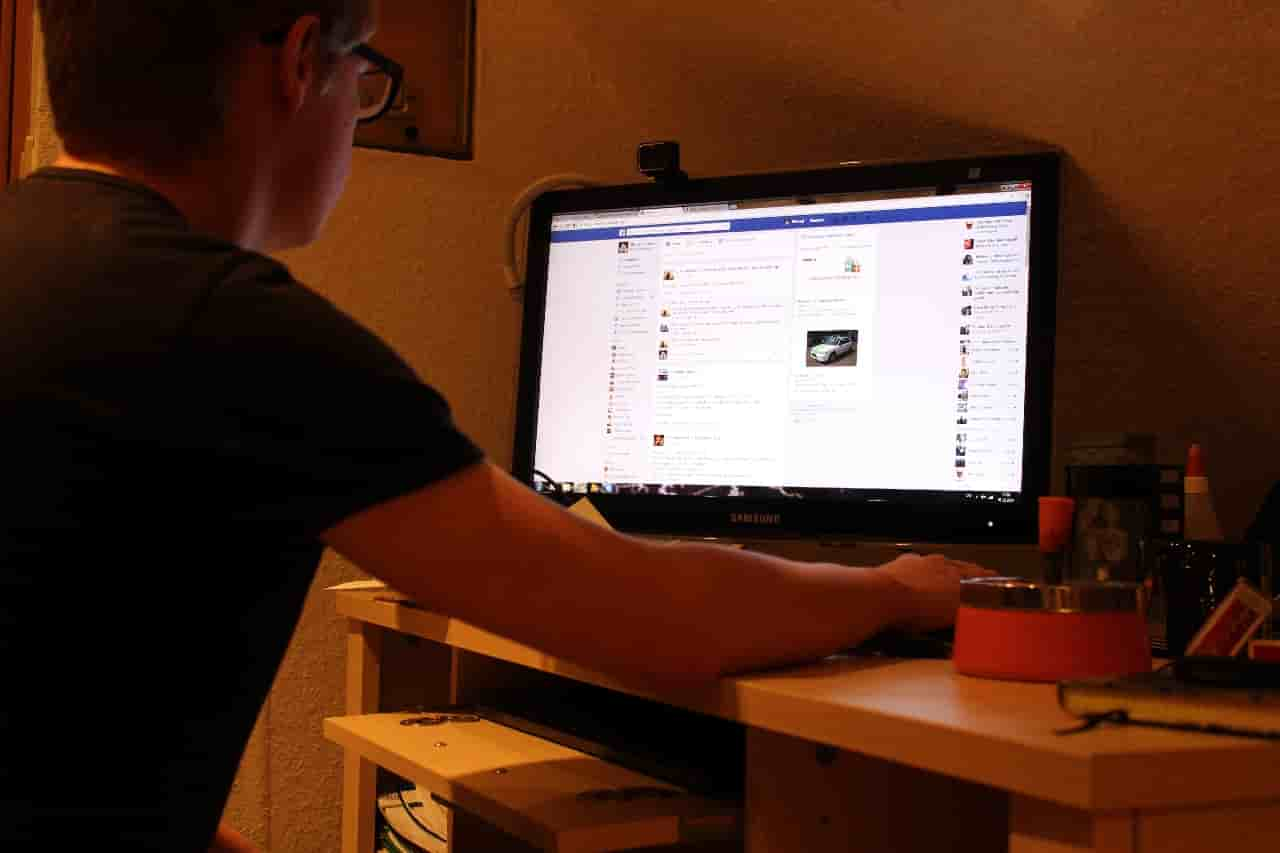Many people struggle with how to stop a shopping addiction. In fact, it is a common problem that affects millions of people.
If you’re one, you know how hard it can be to break the cycle. You may feel like you’re out of control when it comes to spending money. There is hope, though. By developing healthy habits and seeking help from professionals, you can learn how to stop a shopping addiction. We have tips to help you get started.
What Are The Causes of a Compulsive Shopping Addiction?
Do you wonder why you spend so much money on shopping websites? There are a few different reasons why you might be struggling with this problem.
For one, you may simply enjoy buying new things and showing them off to your friends. Alternatively, you could be trying to fill a void in your life or cope with anxiety or other emotions. Let’s not forget about all of the buy now pay later no credit check instant approval no money down offers that entice compulsive shoppers.
Your Brain Fuels Spending Habits
Your brain also plays a role in your shopping addiction. When it comes to shopping addictions, the psychology of the brain can be a huge factor. If you are trying to fill a void in your life, your brain may be sending you signals that make you feel good when you buy something new. This is because your brain is releasing dopamine, which is a neurotransmitter that is associated with pleasure. This is also where the term “Retail Therapy” comes from due to this release of dopamine.
Dopamine releases allow for:
- a sense of reward or pleasure
- motivation
- learning
Unfortunately, this dopamine release can lead to addiction. That’s because the more dopamine you release, the more you crave it. So, if you’re constantly buying new things to get that rush of dopamine, you could be addicted to shopping because of your brain. That leads to compulsive buying and lower bank account balances, not to mention credit card debt.
You can overcome your shopping problem, though. It will take effort, but it is possible to retrain your brain not to seek out dopamine hits from buying things. These steps below will help.
What is the Difference Between a Compulsive Shopper and Shopaholic?
The term shopaholic is typically used interchangeably with a compulsive shopper. However, there are differences.
One of the main differences is that compulsive shoppers do not necessarily have a problem with spending money. Instead, a compulsive shopper has an obsession with buying things and spending countless hours checking out new products, even if they cannot afford them.
On the other hand, shopaholics are defined as people who spend too much money on unnecessary things and have a hard time controlling their spending. Shopaholics usually have a lot of debt because of their spending habits. This ultimately affects their cash flow.
While there are differences of the two terms, they are often used interchangeably.
How Do You Know if You Have a Shopping Addiction?
Shopping habits are often a reflection of your lifestyle and personality. While there are some advantages of online shopping, it comes at a cost. For example, you may shop for entertaining yourself if you’re lonely, or maybe you shop because you enjoy trying out new things and looking for deals.
Some signs that suggest you might have a shopping addiction include:
• You are constantly checking out new products on social media platforms like Instagram or Facebook.
• You cannot control the amount of money you spend when shopping online or in stores.
• You feel satisfaction or even euphoria after buying something new.
If these sound like your habits, then it’s possible that you could be suffering from a shopping addiction. But before taking any further steps, it’s important to get an official diagnosis from a mental health professional so they can help create a plan to help you manage your compulsive shopping.
How to Stop an Online Shopping Addiction
Knowing how to stop a shopping addiction is important when you’re dealing with compulsive spending. But how do you actually stop your addiction? Here are some steps that can get you started:
1. Identify Your Triggers
One of the first things to do is to identify any triggers that may be leading you to make impulsive purchases on shopping sites.
For example:
- Do you tend to emotional shop when you’re bored?
- If you have low self-esteem, will you impulse spend to feel better?
- Do you shop more when you’re feeling down or stressed?
Once you know your triggers that affect your addictions, you can start to avoid them.
2. Set A Budget
Another helpful step is to set a budget for yourself. This will help you keep track of your spending and make sure that you’re not overspending. Use a budget by paycheck system. When budgeting, be sure to include money for necessary items like bills and groceries, as well as some fun money for things like entertainment and eating out.
3. Stick to Your Budget
It’s not enough to just set a budget—you need to actually stick to it. This means being mindful of your spending and avoiding any unnecessary purchases. If tempted to make an impulse buy, take a step back and try to rationalize why you’re really shopping.
4. Seek Professional Help
See a mental health professional for help. Mental health professionals specialize in addiction and substance abuse. An addiction to shopping has similar foundations to substance abuse, and seeking professional help is important. It’s important to get the help you need in order to overcome this problem. Resources are available online, as well as in-person support groups. Seek professional help if you have any questions or concerns about your addiction.

5. Develop a New Hobby
Developing a new hobby can curb an impulse purchase habit. Many people turn to shopping when they’re bored or stressed. If you’re guilty of this habit, it may be time to try something else. Yoga is a wonderful hobby that can be relaxing and also be an effective stress reliever. Developing a new hobby may be a great alternative to buying a new TV set or buying the latest gadget.
Or, you can sell some of your items to make cash. The best things to sell on eBay for profit are things that are unique and will be popular with buyers. Consider selling old books, vintage clothes, and other items you no longer want or use.
Once you develop a new hobby, you can avoid impulse purchases by sticking to your list.
6. Pay Cash or Use Debit
One common tip for overcoming a shopping addiction is to use cash or debit instead of credit. This forces you to be more mindful of your spending because you can only spend the money that you have with you. When using a department store credit card with instant approval, it can be easy to forget how much your purchases are adding up and get into debt over time. If possible, try to stick to paying in cash or debit, and avoid using credit whenever possible.
7. Change Your Daily Routine
For some people, their shopping addiction is linked to their daily routine. If this is true for you, try to change up your routine so that it doesn’t involve going to the mall or browsing through shopping websites.
Maybe you can start taking a different route to work so that you don’t pass by the stores that tempt you. Or, if you usually shop online, try unsubscribing from emails or deleting your accounts from websites. Whatever it takes, breaking your old routines can be helpful in kicking your shopping addiction.
8. Delay Your Purchases
If you’re having difficulty resisting temptation, try delaying your purchases. This means waiting a certain amount of time—say, 24 hours—before buying anything. This will give you time to think about your purchase and see if it’s really necessary or worth the money.
9. Set Aside a Shopping “Fund”
To help yourself resist temptation, set aside a shopping fund that you can use anytime you want to buy something new. This will allow you to feel like you’re still getting what you want without going overboard on impulse purchases. Some people even choose to deposit their shopping funds into separate bank accounts to keep them from being tempted by easy credit card access.
10. Join a Support Group
If your addiction has become unmanageable, joining a support group may be helpful. There are many online forums to share stories and receive advice from others who have dealt with similar problems in the past. Likewise, there are in-person support groups and counseling sessions that may be useful as well.
Stop a Shopping Addiction with Alternatives
Noticed that a lot of your shopping is done through shopping apps or a shopping website? Many compulsive shoppers spend money because it’s easy and convenient to do so. If this is the case for you, try deleting your shopping apps or blocking certain websites. This will help you curb your spending because you won’t have access to the things that tempt you.
1. Delete Shopping Apps
One of the easiest ways to stop a shopping addiction is by deleting your shopping apps so you won’t fall victim to those flash sales notifications that always seem to pop up at the worst times. If you have a hard time deleting them yourself, ask a friend or family member to do it for you. Just getting rid of the temptation can be helpful in breaking your addiction.
2. Block Shopping Websites
If you find that you’re always browsing through shopping websites even when you’re not looking to buy anything, try blocking those sites on your computer or phone. The stores that accept Afterpay even have popups on your phone when you simply visit the site. You can easily avoid temptation by blocking these websites with parental control software.
This will help you avoid the temptation altogether and hopefully help you break your addiction. When you block websites, you can still access them if you really want to, but it’s more of a hassle than it’s worth.
3. Limit Your Screen Time
Another way to stop a shopping addiction is by limiting your screen time, so you’re not constantly exposed to ads and notifications from shopping apps and websites. If possible, try to limit yourself to 30 minutes of screen time per day. This will help you focus on other things and hopefully break your addiction.
4. Spend Time with Friends and Family
Spending time with people you cherish and love is a great way to stop a shopping addiction because it gives you something else to focus on. When you’re around people who care about you, you’ll feel better and be less likely to give in to temptation. So, try scheduling regular get-togethers with your friends and family to improve your mood and help you break the addiction.
5. Unsubscribe from Retailer Emails
Another way to stop a shopping addiction is by unsubscribing from all of the retailer emails you receive. This way, you won’t be tempted by sales and promotions that are always popping up in your inbox. Just make sure you’re really unsubscribed, so you don’t accidentally give in and start spending again.
6. Get Rid of Your Credit Cards
If you have credit cards, it may be time to get rid of them, so you’re not as tempted to spend money. This may seem like a drastic measure, but it’s worth it if it means breaking your addiction. You can always get new credit cards later on down the road. Even online store credit cards with guaranteed approval can be a sign of addiction.
7. Try a Minimalist Lifestyle
Living a minimalist lifestyle is one pathway to saving money. You can curb your spending habit and other addictions by practicing frugal living and living with fewer things. Try to give away or sell the items you don’t use anymore, so you’re not tempted to buy new ones.
The average person has 300,000 things in their home. Do you really need all of those things? Probably not. So, try living with less and see how it feels. You may be surprised by how much better you feel when you’re not constantly surrounded by stuff.
8. Volunteer Your Time
Volunteering is a great way to help others while also breaking your shopping addiction and giving your debit card a rest. When you volunteer, you’ll focus more on helping others and less on buying things. If you’re not sure where to start, try volunteering at a local food bank or animal shelter. These types of organizations are always looking for help and will appreciate your time.
Related Questions:
What Are Shopping Triggers?
Shopping triggers can be anything that causes you to want to buy something. It may be a sale, a special promotion, or even just something on TV. Whatever it is, if your shopping addiction stems from being tempted by these things, then it’s important to learn how to control those triggers, so you stop getting sucked in.
What is Emotional Spending?
Emotional spending is when you buy things to make yourself feel better or distract yourself from negative emotions. For example, if you’re feeling down, you might go shopping and end up buying a bunch of things that aren’t really necessary just to cheer yourself up. If this sounds like something you often do, it’s important to learn how to deal with these emotions in a healthier way and avoid emotional spending in the future.
How Can I Curb Impulse Spending?
One of the best ways to curb impulse spending is by keeping track of your finances regularly, so you know exactly how much money you have. This will help prevent you from making impulsive purchases that can cause problems for your budget later on. You may also want to set a spending limit for yourself and make sure you stick to it. This will help train your brain to think twice before making unnecessary purchases.
What is the 30-Day Rule?
The 30-day rule is when you wait 30 days before making a purchase to see if you still want it. This is a solid way to curb impulse spending and make sure you only buy things that you really need or want. If you can’t wait 30 days, try waiting at least a week, so you have time to think about the purchase and make sure it’s something you really need.
The 30-Day rule has been used by people for years to help break bad spending habits and achieve financial goals. If you’re struggling with a shopping addiction, it may be time to give it a try.
How Can I Practice Better Spending Habits?
There are a few things you can do to practice better spending habits. First, try keeping track of your finances with budgetary guidelines, so you’re aware of exactly how much money you have and where it’s going. This will help you make smarter decisions about your spending. You may also want to set a budget and stick to it. This will help ensure that you’re only spending money on the things that are truly important to you. Finally, try waiting at least 30 days before making a purchase, reach out to family members, and join a support network. This will help prevent impulse buying and allow you to really think about whether or not you need or want something.



